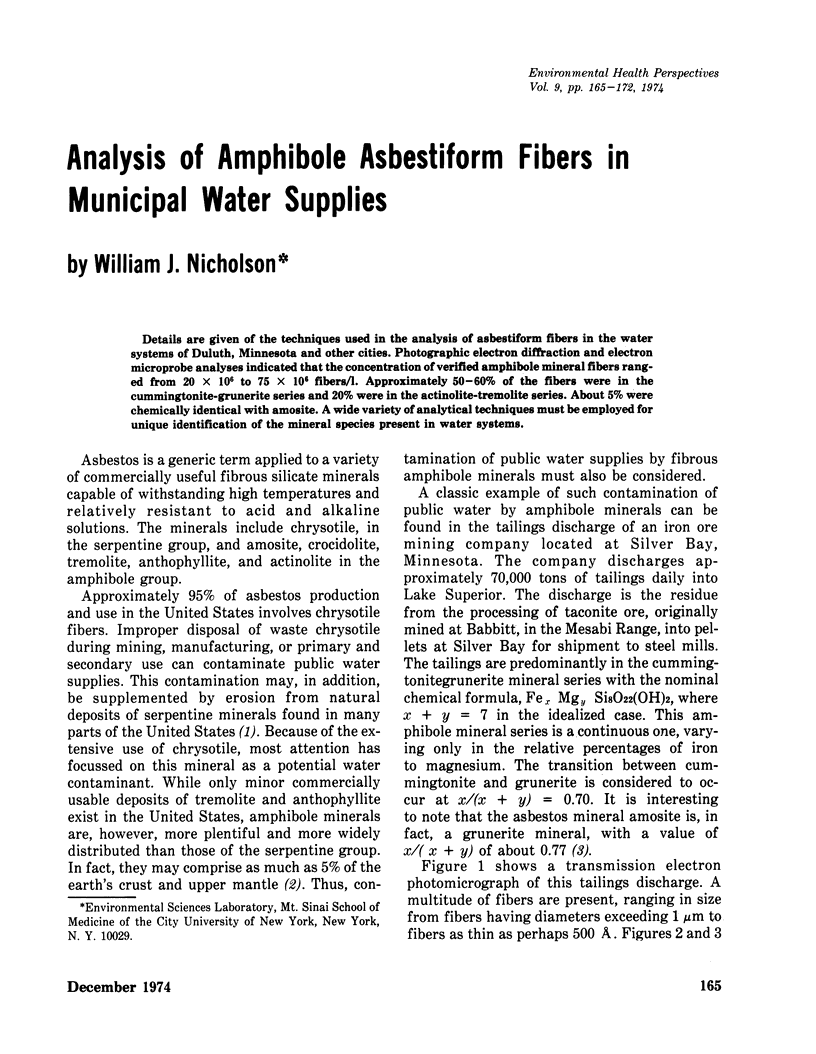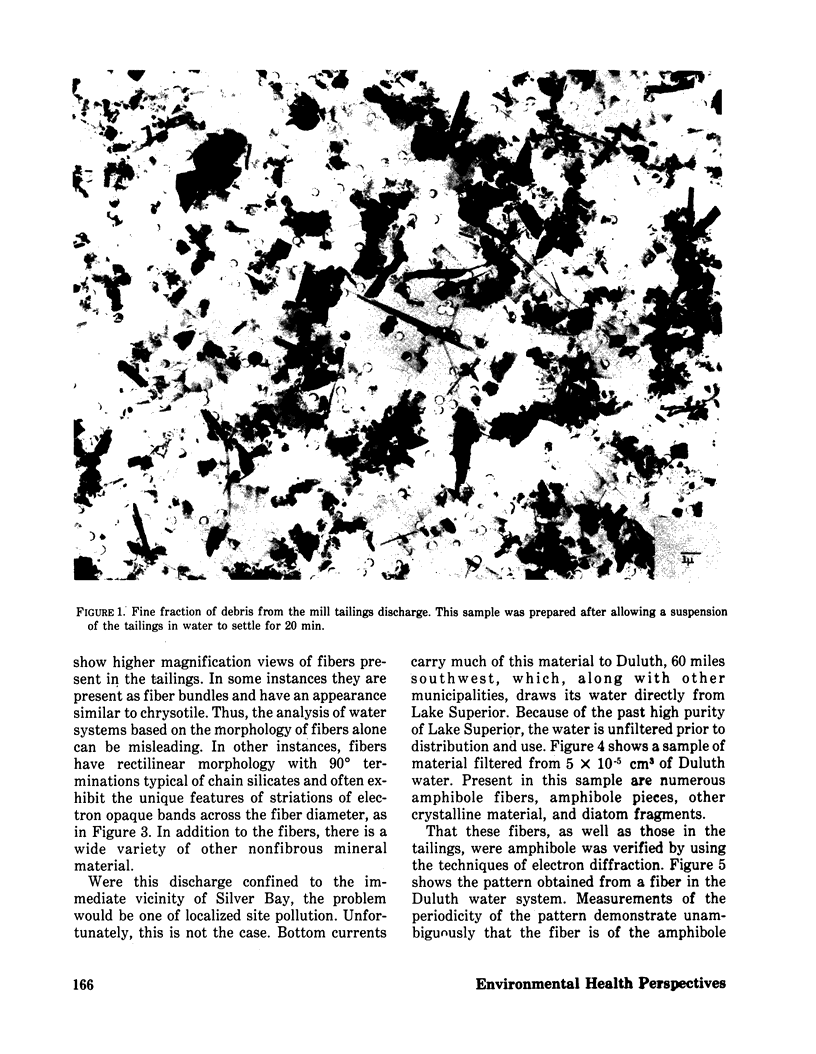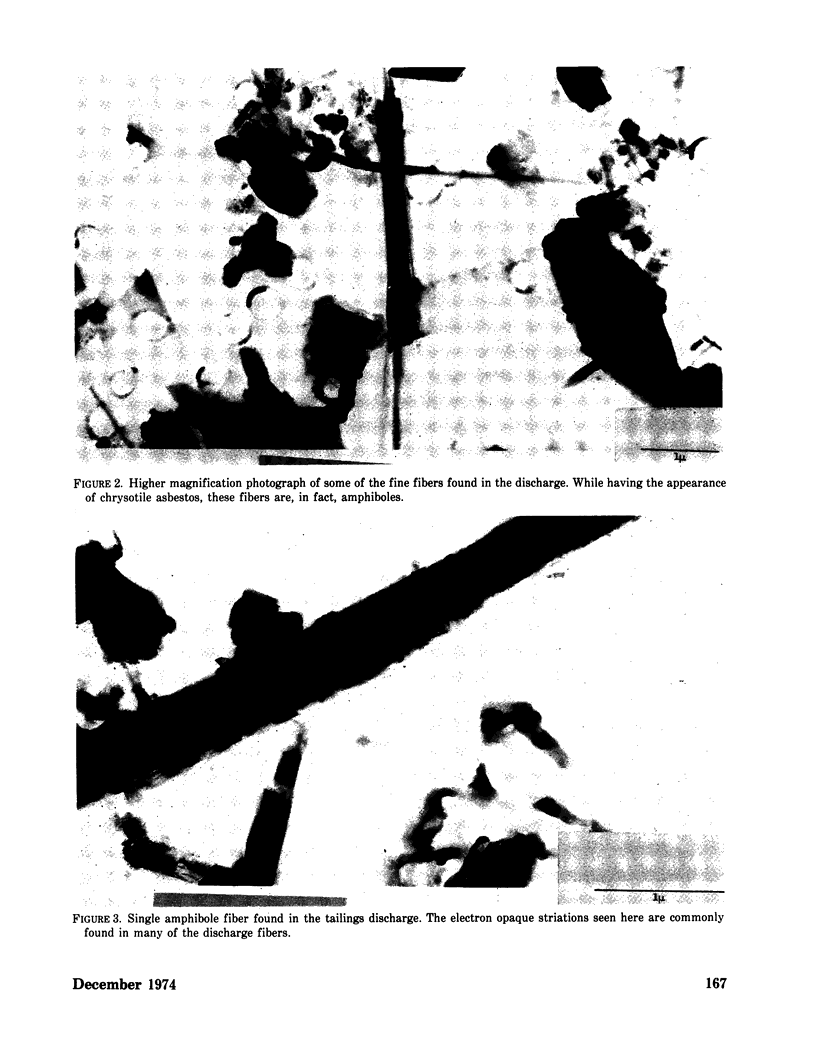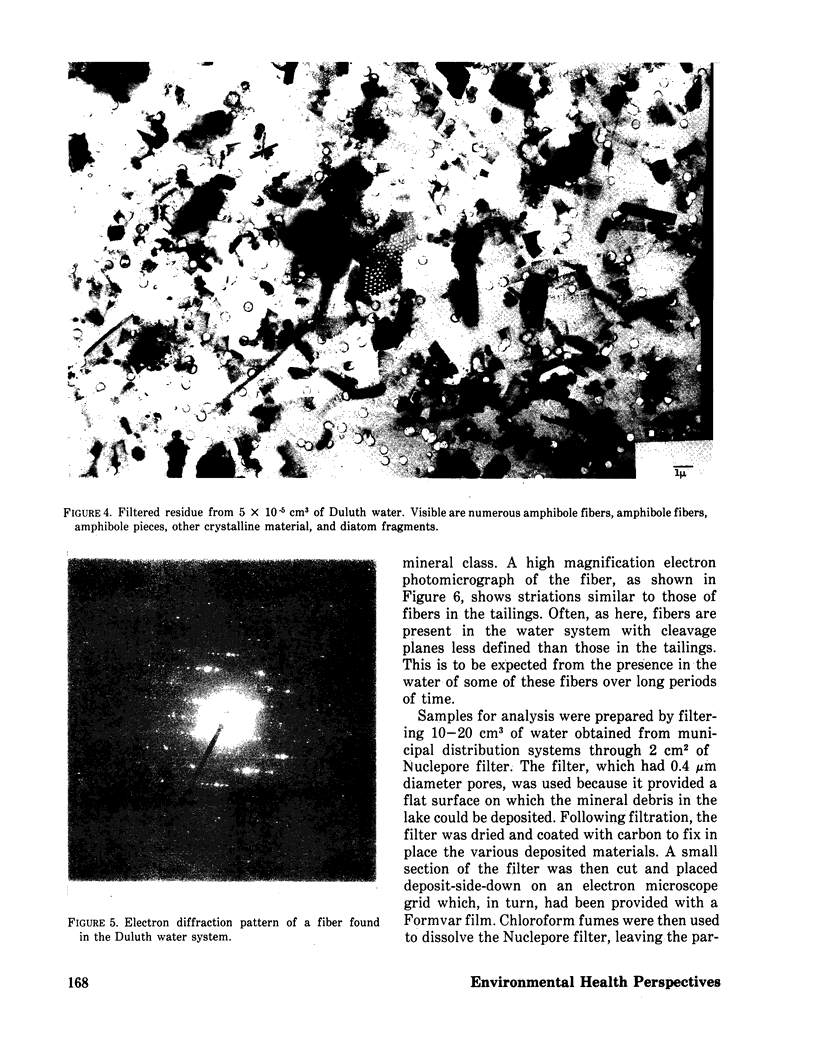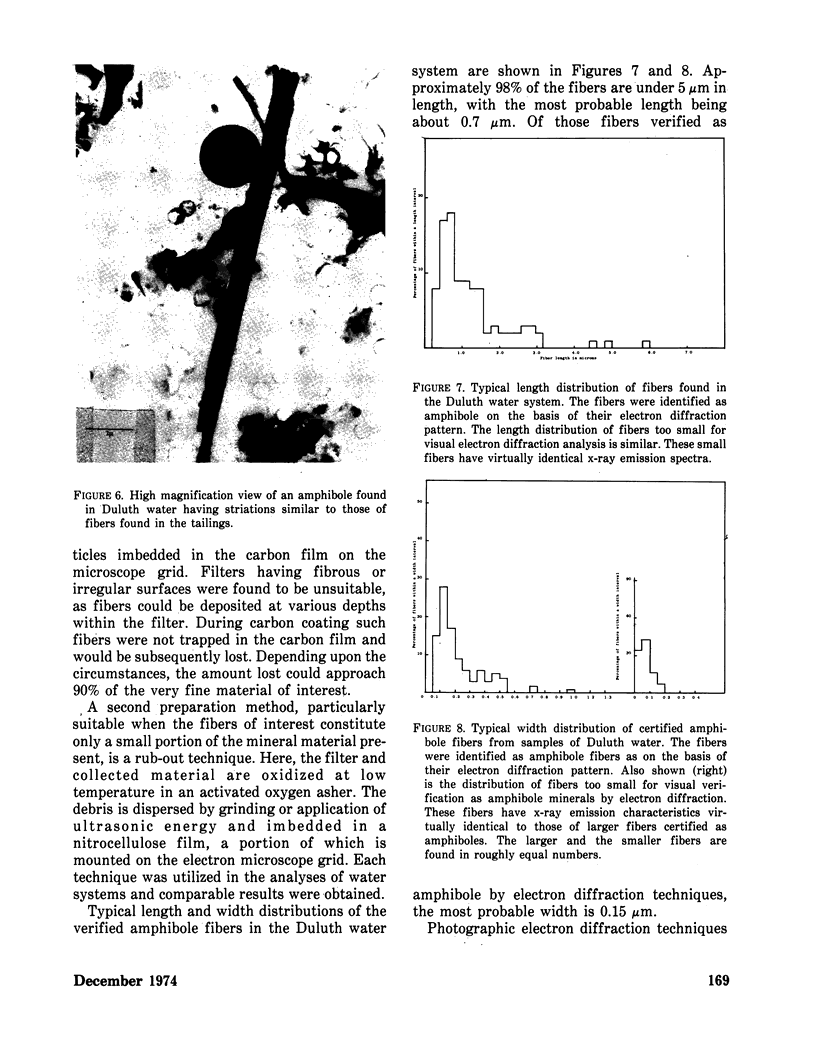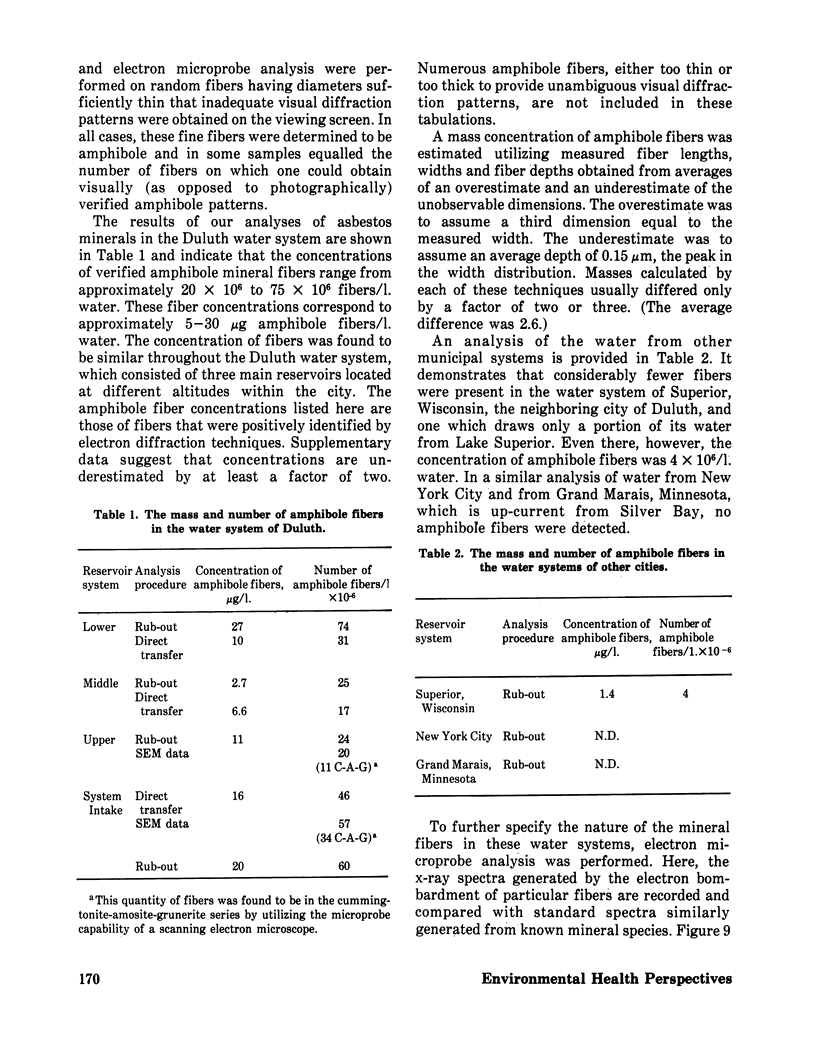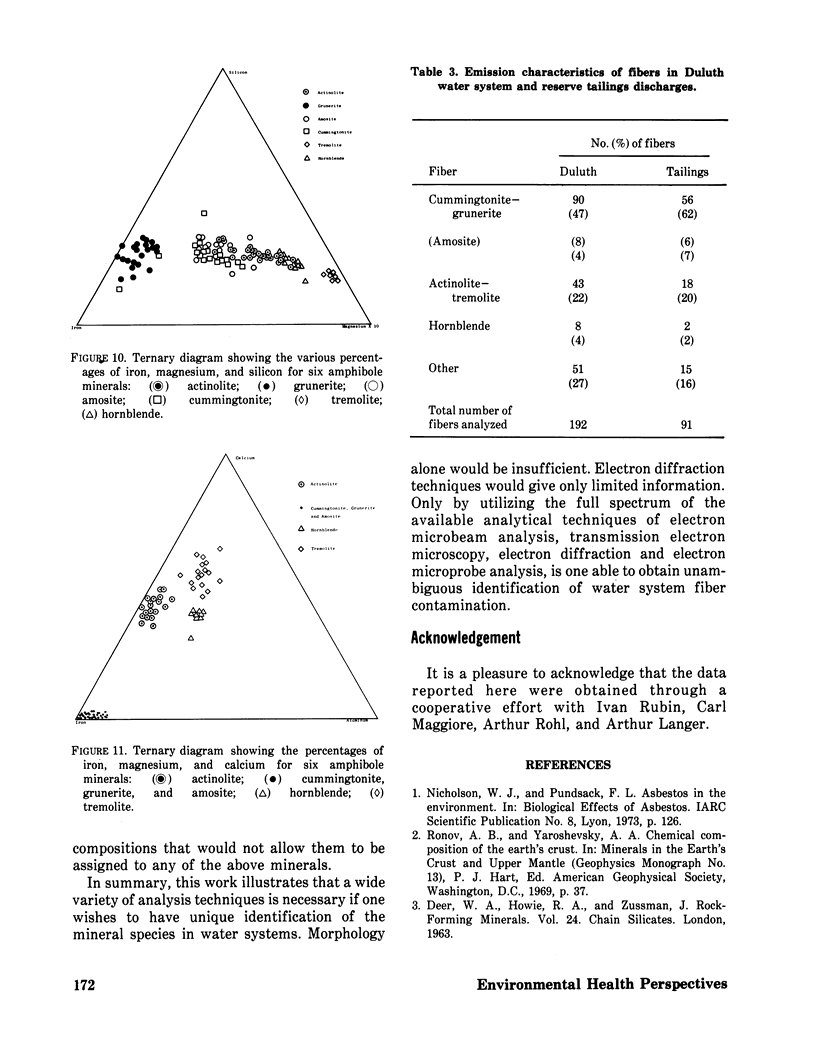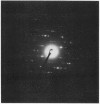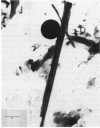Abstract
Details are given of the techniques used in the analysis of asbestiform fibers in the water systems of Duluth, Minnesota and other cities. Photographic electron diffraction and electron microprobe analyses indicated that the concentration of verified amphibole mineral fibers ranged from 20 × 106 to 75 × 106 fibers/l. Approximately 50–60% of the fibers were in the cummingtonite-grunerite series and 20% were in the actinolite-tremolite series. About 5% were chemically identical with amosite. A wide variety of analytical techniques must be employed for unique identification of the mineral species present in water systems.
Full text
PDF